The week of May 13-19 takes us from Day 6 to Day 11. This week we will highlight the moon crater Albategnius, viewable on Wednesday evening, May 15, Day 8, and located in the SE quadrant of the Field Map
Albategnius: An 85-Mile Complex Moon Crater
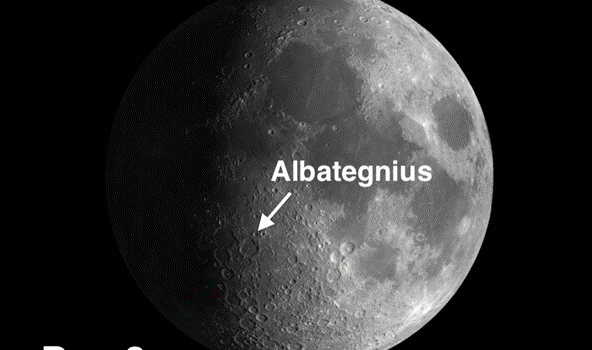

The week of May 13-19 takes us from Day 6 to Day 11. This week we will highlight the moon crater Albategnius, viewable on Wednesday evening, May 15, Day 8, and located in the SE quadrant of the Field Map
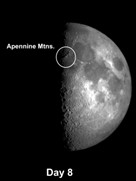
The week of February 12-18 takes us from Day 3 to Day 9. This week we will highlight Montes Apenninus, located in the NW quadrant of the field map and viewable on Friday evening. Montes Apenninus: The Apennine Mountain Range
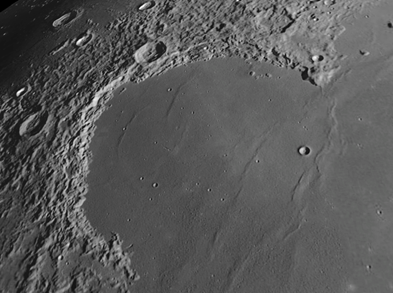
The week of February 5-11 takes us from Day 25 to Day 2. This week we will highlight Sinus Iridum, viewable on Tuesday. Sinus Iridum: [NW/E6; L=32°W] Sinus Iridum (the Bay of Rainbows), located in the northwest sector of Mare
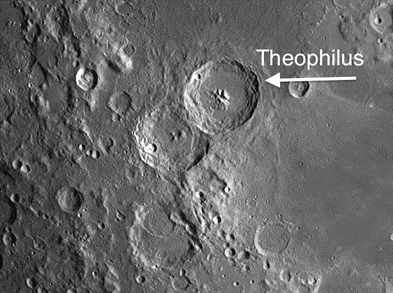
The week of January 15-21 takes us from Day 5 to Day 11. This week we will highlight the moon craters Theophilus, Cyrillus, and Catharina, viewable on Tuesday night. Day 6 (T=10° E.) Theophilus, Cyrillus, Catharina: [Repeated from Day 5–SE/L12;
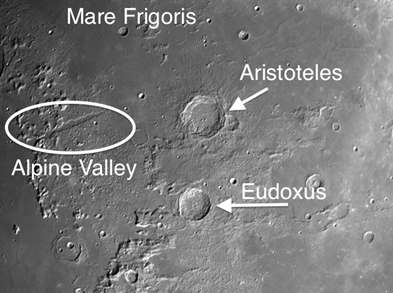
The week of December 25-31 takes us from Day 14 to Day 20. This week we will highlight the moon craters Aristoteles and Julius Caesar, viewable on Sunday night and found in the NE quadrant of the Field Map. Aristoteles:
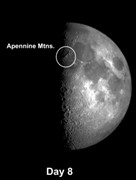
The week of December 18-24 takes us from Day 7 to Day 13. This week we will highlight Montes Apenninus, viewable on Tuesday and Wednesday nights. Montes Apenninus: The Apennine Mountain Range [NW/G9] is the most spectacular feature on the
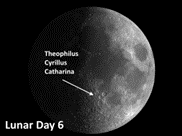
The week of December 11-17 takes us from Day 29 to Day 6. This week we will highlight the moon craters Theophilus, Cyrillus, and Catherina, viewable on Sunday evening. Theophilus, Cyrillus, Catharina: [SE/L12] This is the most imposing trio of
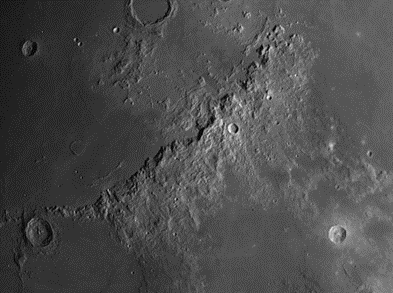
The week of July 24 – July 30 takes us from Day 7 to Day 13. This week we will highlight the Apennine Mountains, viewable on Tuesday evening. Montes Apenninus: [NW/H9-G10; L=4°W] The Apennine Mountain Range is the most spectacular
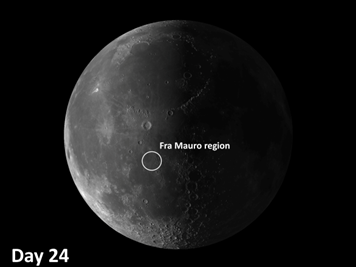
The week of July 10 – July 16 takes us from Day 22 to Day 29. This week we will highlight moon craters in the Fra Mauro region, viewable before sunrise on Tuesday. Fra Mauro region: [SW/K8; L=17°W] Moon craters
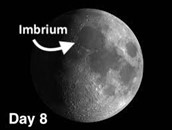
The week of June 26-July 2nd takes us from Day 8 to Day 14. This week we will highlight Mare Imbrium on the moon, which should be 80% visible on Tuesday evening. The Moon has now entered its gibbous phase